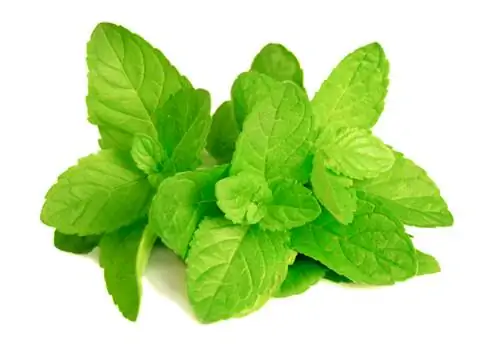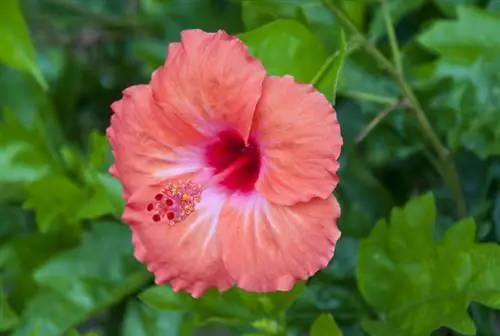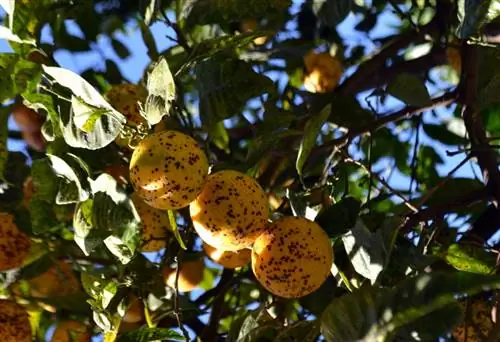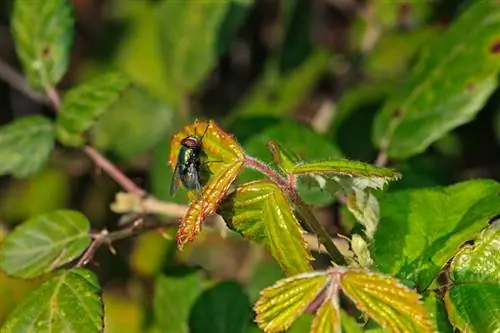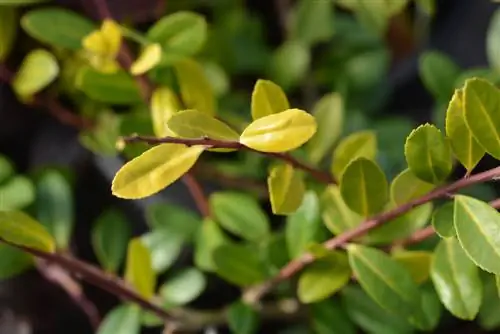- Author admin [email protected].
- Public 2023-12-16 16:46.
- Last modified 2025-06-01 06:02.
Although mint has natural resistance, it is not completely immune to disease. The following lines explain how the symptoms manifest themselves and what remedies can be used to cure the plant.
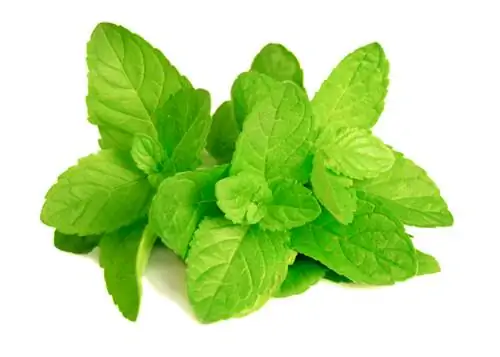
What diseases can affect mint and how to treat them?
Mint can be affected by diseases such as mint rust, powdery mildew or sooty mold. Combat measures include cutting back infected shoots, using home remedies such as milk-water or garlic broth and disposing of the clippings in household waste.
Mint rust - diagnosis and treatment at a glance
Within the large genus of rust fungi, one species has specialized in attacking mint. Puccinia menthae spores are active throughout the growing season, with warm, humid weather increasing the risk of infection. The symptoms manifest themselves in the form of brown spots on the leaves and withering shoots. Since the use of chemical preparations does not make sense, the following natural control methods can be considered:
- cut back all shoots close to the ground
- The mint sprouts he althy again from at least one leaf node
- dispose of the clippings in household waste or burn them
The bed is then repeatedly watered with horsetail broth to strengthen the new shoots.
Mildew on mint - this increases the chances of healing
The spores of mildew are omnipresent in the herb garden. As soon as temperatures rise in early summer, the disease spreads. In the early stages, a mealy-white patina appears on the top and bottom of the foliage. As the disease progresses, the coating turns dirty brown and the leaves wither and fall off. Thanks to the vigor of mint, the chances of a cure are good. How to proceed:
- cut out infected leaves in the early stages
- spray the sick mint with milk-water in a ratio of 1:9
- alternatively, make a broth from 1 clove of garlic and apply it
- if in doubt, cut off the entire plant just above the ground
It is important to note that liquid agents are always sprayed on the underside and top of the leaves. Extend the treatment to neighboring plants because powdery mildew spores are not picky. The clippings have no place on the compost, because from here the pathogens immediately start looking for further victims.
Tips & Tricks
If dark brown to black spots appear on the mint leaves, in conjunction with aphids and hordes of ants, this is sooty mold fungus. The lice serve as vectors of the disease, so only a two-pronged approach to combating them is possible. Given the high effort involved, we recommend cutting back the entire mint immediately in this case.

